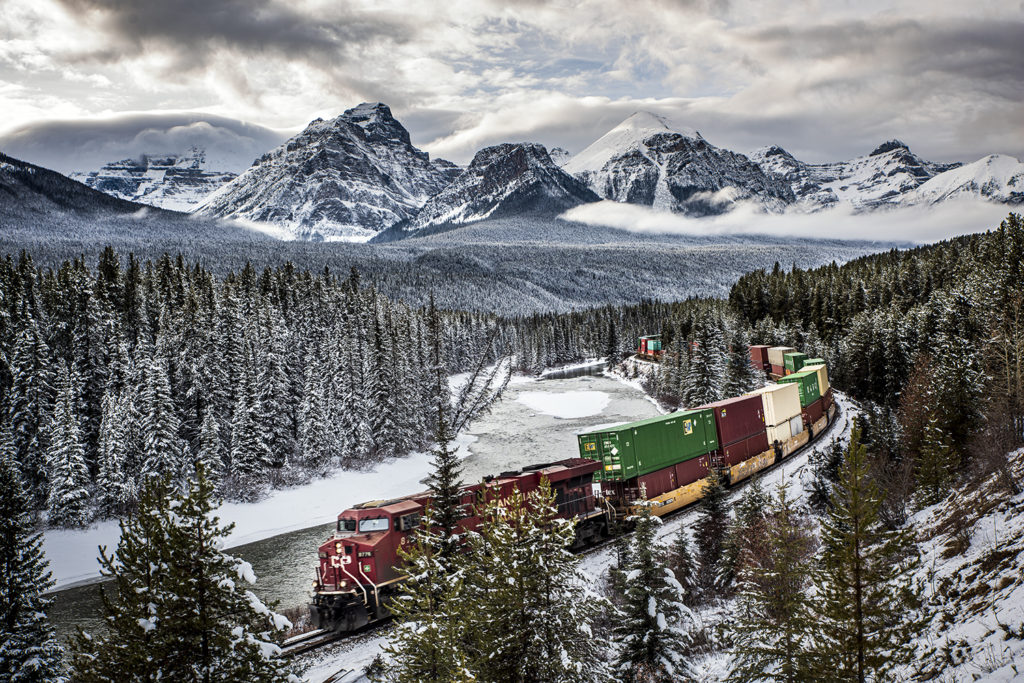Good day! It’s #TravelTuesday and because it’s Tuesday, it’s not Scott but me, Dave Williams, fresh from a red-eye flight from Calgary to London, coming at you loud with some kind of photographic wisdom!
Today, I want to touch on reverse engineering a photo, and this is something you can learn a lot more about from Glyn Dewis’ book Photograph Like a Thief if you want to dig deeper. Let’s do it!
So, in Banff National Park, there’s an iconic photo and I wanted it. I’ve preached time and again about being original, but I just wanted this shot bad! There’s a train line running through the park as part of the Canadian Pacific Railway network, and one curve, in particular, facing up to the mountains’ home to Lake Louise and Moraine Lake. It’s Morant’s Curve, named after the Canadian Pacific photographer who took the first photo of the new rail line here.

As you can see here, it’s so popular because of the original shot that there’s a viewing area with railings.
When it comes to reverse engineering a photo, it’s a lot about light. When it comes to photos of people, we can usually work out the lighting quite easily by looking at the edges of the person and the reflection in their eyes to see how they were lit. But, when it comes to landscapes, it’s more about working out the location and the timings, which we can do quite easily with maps and PhotoPills.
What we’re looking for with the light is the time of day, dictating the direction, and other clues that will help us with the scene, like the temperature and tone and the softness.
We also need to reverse engineer the shutter speed and focal length used, so we can apply it to our image, or add a creative flair if we want to put our own spin on it.
The whole process of reverse engineering a photo is a combination of science and art, and we can use it to apply the exact look from the original photo or put it “into our own words” if we want. That’s what I wanted to do, and here’s my shot: –

What I’ve done here is pick a spot slightly back from the gap, giving the train a piece of the image but not the entire focus. The front end creeps through the gap in the trees looking somewhat like a face, and then the rest of the train twists and turns as a leading line toward those epic mountains behind. The whole scene is, of course, iconic, but it has my own little spin on it, too.
Reverse engineering a shot like this is a good skill to apply, and a great way to learn. Have a go at it. I promise you’ll enjoy it, and it will help you in critiquing yourself, as well as deconstructing and analysing a photo.
Much love
Dave




